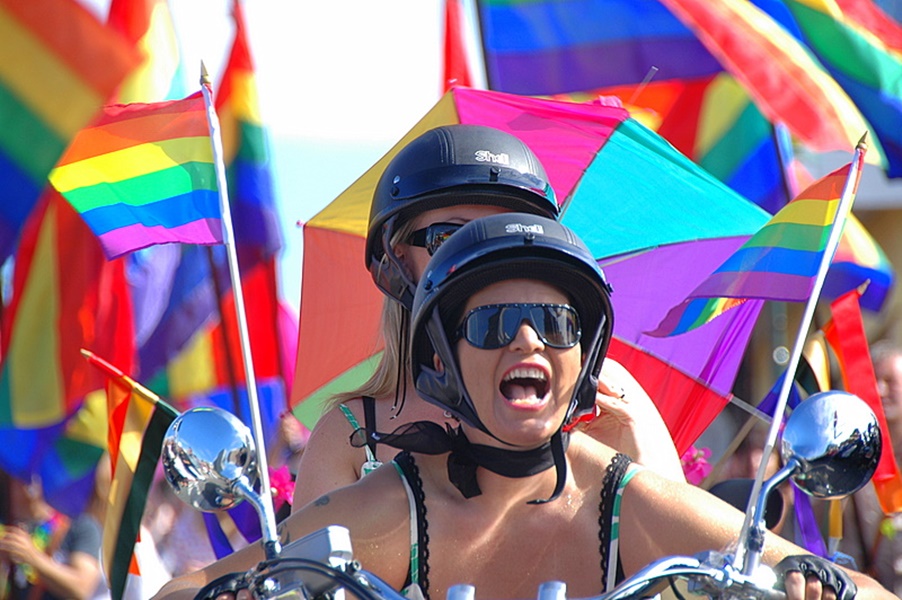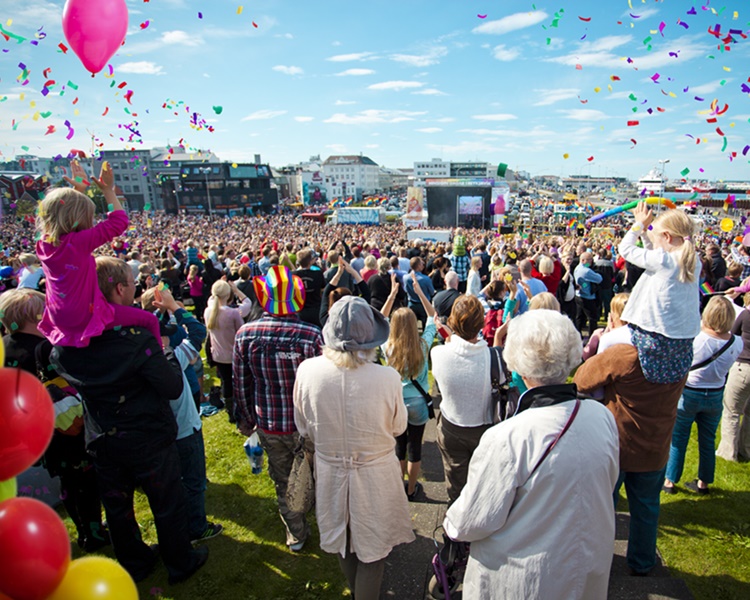The Reykjavík Pride festival is just around the corner, starting tomorrow on August the 2nd and ending with a bang on the 7th. Ásta Kristín Benediktsdóttir and Vilhjálmur Ingi Vilhjálmsson are in the management team for the festival but the theme this year is History.
They both agree that it’s crucial to look back on the queer rights battle through the years to appreciate how far the battle has come. They also believe that even though some rights have been won, those rights have to be constantly guarded so they won’t be taken away.
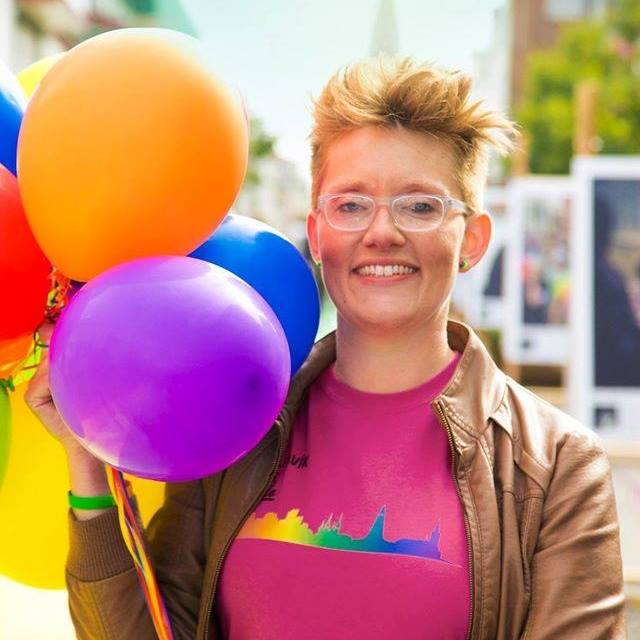
“Often we have looked back on the festival and thought: Can we take a closer look at how history matters to us? Not much has been published about the queer history in Iceland and we wanted to make much of it now,” says Ásta about this year’s theme and Vilhjálmur agrees.
“I think the Reykjavík Pride festival has to do with history every year even though the theme has never been dedicated to it. This year we want to respect our history and explore it. Events this year, for example the terrorist attack in Orlando, have reminded us that we’ve come a long way in many parts of the world but definitely not far enough. The queer rights battle has not been won and what we have achieved can easily slip away from us if we’re not careful. I have not experienced fear of losing my home or my job, even my life, because of my sexual orientation. We live in a society in Iceland where queer people have basic human rights but it’s such a short time since that wasn’t the case. I think the theme also reminds us that these rights cannot be taken for granted.”
“We are here because of what happened in the past. We have to know this history, study it, respect it and find ways to move forward and not dwell in the past,” adds Ásta.
“This year we want to respect our history and explore it. Events this year, for example the terrorist attack in Orlando, have reminded us that we’ve come a long way in many parts of the world but definitely not far enough.”
The program for the Reykjavík Pride festival this year is diverse and you can catch everything from a movie screening to a queer cruise, from concerts to educational lectures. But can we expect anything out of the ordinary?
“There are of course always some fixed points like the opening ceremony, the Pride Parade and the Pride Ball. This year we have a lot of educational events that are in connection to this year’s theme. For example, we have a historical walk and a hi(story) night. In addition we have lectures and discussion events about the queer rights battle in Iceland in a historical light.
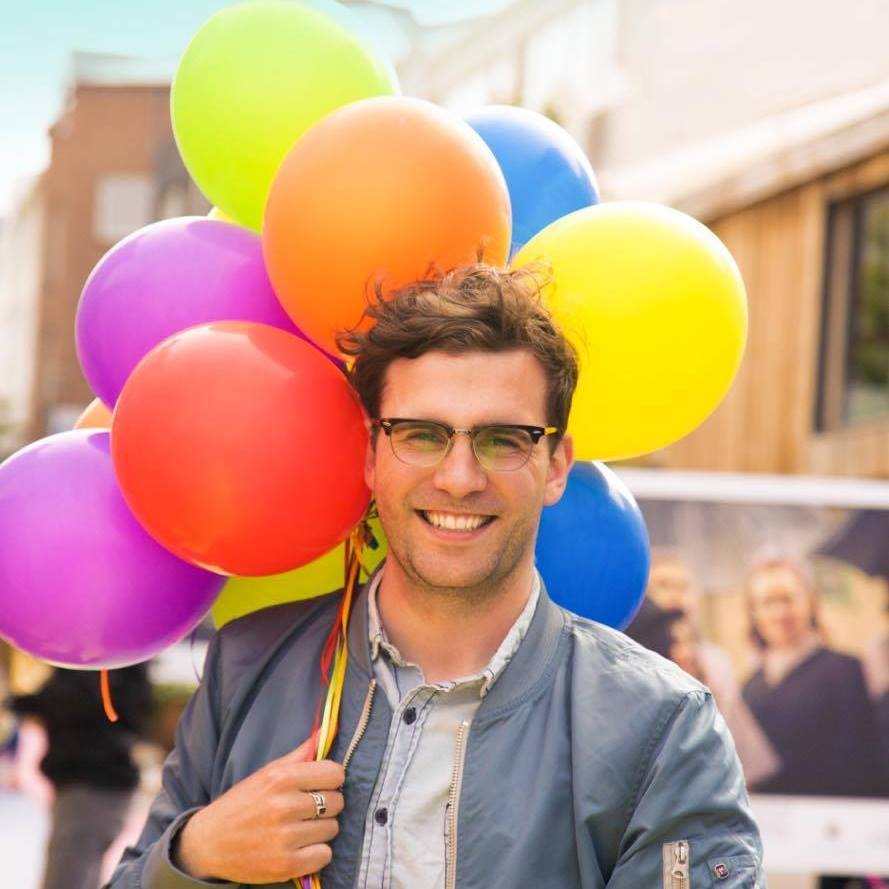
I would also like to mention that we are showing the famous documentary “Hrein og bein” (“Straight Out Stories From Iceland”) which was released in 2003. Much has happened in the queer society since then and after the screening of the movie we will have a panel discussion about the film’s importance and the fact that it became outdated. A few of the young people who were interviewed in the film, who are of course older now, will take part in the discussion and we ask them to look back to the year it was made and how things have changed,” says Ásta.
Countless days, weeks and months go into planning a festival like Reykjavík Pride but Ásta and Vilhjálmur not only have to make sure everything falls into place, they also publish the Reykjavík Pride Magazine. Don’t you have to be a bit crazy to take on this work load?
“This work is extremely rewarding and extremely demanding,” says Vilhjálmur and laughs.
“Especially during this time of year where all the pieces are coming together and the festival is drawing near. I doubt that we will win the award for employee of the month in our day jobs. Fortunately we get a lot of support from our employers when we have to run errands and take care of this and that but I personally feel guilty at the end of the day when I realize that half the day has been spent sorting things out for the Reykjavík Pride. But the exhilaration that I feel for having had my part in making this explosion of joy is indescribable,” adds Vilhjálmur with a smile.
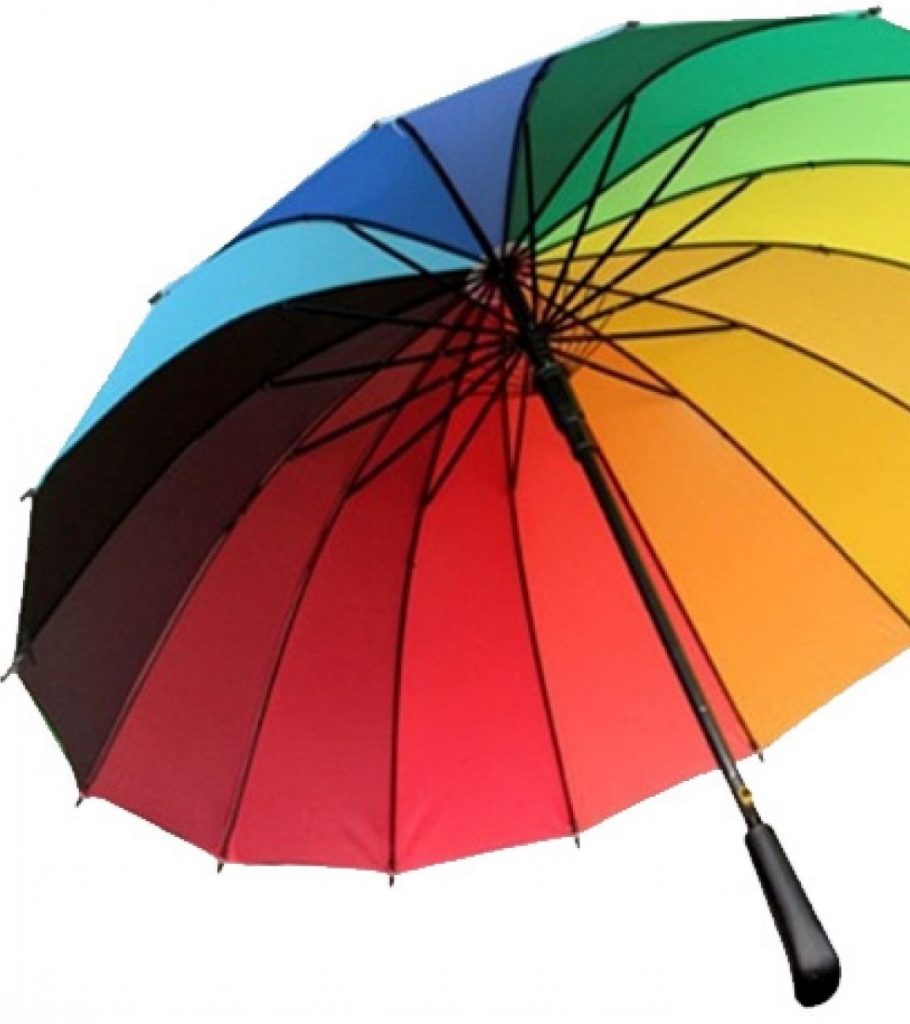
Ásta of course feels the pressure as the festival approaches, having some odd one hundred volunteers making sure everything is how it’s supposed to be. “Of course it’s bananas. It takes the management team months to prepare the program and the magazine and keep all the balls in the air. We all have day jobs so it’s a lot of pressure but extremely fun.”
So I guess your social life is out the window?
“We can say that July is not a month where I plan a lot of extra curricular activities,” says Vilhjálmur and laughs out loud. “But it’s totally worth it.”
“The people that take part in the festival are just lovely and I’m working alongside some of my closest friends. It’s fun and very rewarding to work with people who are donating their work for the cause and aiming for the same objective. Then it’s not really an issue that you don’t have a lot of spare time on your hands,” says Ásta.
The Pride Parade is a powerful weapon
One vital part of the Reykjavík Pride festival is the Pride Parade which has been criticized the last years for either being too political or too glitz and glam. Ásta and Vilhjálmur both believe that the criticism is just.
“It’s a grass root parade. It’s a parade that many queer people and many straight people have an opinion on. I understand the disunity regarding the parade and we listen to everyone’s opinion. But at the end of the day it is a grass root parade, like I said, and we don’t even have a say on who takes part in it. We don’t have the slightest idea who takes part in it until the week before the parade,” says Ásta.
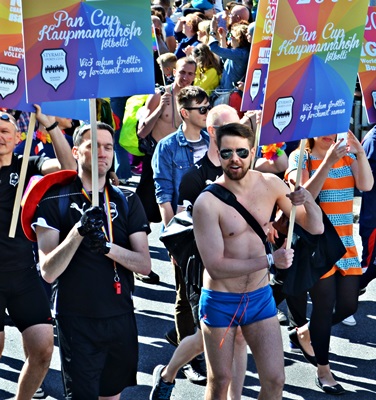
“Everyone has a point and I think it’s positive and good that people have an opinion on the parade,” says Vilhjálmur. “We have never asked anyone to take part in the parade and I think the parade reflects the atmosphere at any given time. Three years ago Samtökin ’78 were holding up signs with homo- and transphobic slur that had been written on the internet and after that they were criticized for being too negative.
It is hard to find a balance between celebrating what we have achieved and reminding people what we have yet to accomplish.
We can’t turn a blind eye to prejudice and it doesn’t matter whether it is apparent on the internet or in the locker room after practice. There are a lot of issues we have to address and we are in the position to address them which is such a good feeling. And let’s not forget that anyone can take part in the parade. So if you think it lacks kink, bring it. If you think it lacks tinsel, bring it.”
Ásta agrees and celebrates the fact that the parade often reflects current events. “I think the parade is extremely important. We need to keep the rights battle alive but we also have to celebrate the things we have achieved.
The events in Orlando, for example, had a deep impact on many. It’s hard to digest that these sort of attacks take place and we can’t just write it off because it happened in another part of the world. It could have happened here. Iceland has been a relatively peaceful country and is considered quite safe but, I’m sorry to say that we can never be
“…we are lucky because most of us can walk safely down the street, holding hands with the one we love … that’s not the case in many parts of the world.”
sure that these sort of tragedies won’t take place here. We have to be aware that the battle changes but it’s never fully won.”
“Here in Iceland we are lucky because most of us can walk safely down the street, holding hands with the one we love and not have to worry about being sneered at. Unfortunately that’s not the case for everyone under the queer umbrella and in many parts of the world,” adds Vilhjálmur and continues.
“In Iceland we are in a good position to eliminate prejudice because the Reykjavík Pride is quite a mainstream festival. That gives us a powerful weapon because it means that we can get our point across to a larger group than, let’s say in the US. Almost only queer people take part in the Pride Parade in many parts in the US and then the rights battle never makes it all the way to people’s home. In Iceland our Reykjavík Pride is apparent in almost every mass media and that increases the chances that we can reach the people who really need enlightenment about the LGBTI+ community.”
The colorful groups of the queer umbrella
The queer society has changed a lot the last few years and now there are many minority groups under the very colorful, queer umbrella. Is it difficult to take all those groups into consideration when planning a festival like Reykjavík Pride?
“It’s always a challenge but it’s a joyous one. We want as many individuals in the LGBTI+ community to find something they’re interested in during the festival. The number of these groups is steadily increasing and that’s something to celebrate,” says Ásta.
“It’s a positive challenge because all of these groups are willing to work with us and we try to give the minorities within the minority some room. We are very aware that we are catering to a large audience and we plan the program so that it fits different groups. The umbrella is big and we can’t be experts in everything so when we aren’t sure about certain things or need help we turn to the experts in that field,” says Vilhjálmur.

Both Ásta and Vilhjálmur have been working for the Reykjavík Pride festival for a few years and when I ask why they go through this craziness many years in a row the answer comes without thinking almost. “It’s so addictive. It’s difficult to quit,” says Ásta and laughs.
“We want as many individuals in the LGBTI+ community to find something they’re interested in during the festival.”
“I’m a very social person and I wanted to make a difference in the queer community. One of the reasons for that has to do with when I came out of the closet as gay. My family was extremely supportive but I will never forget how I felt leading up to the time when I decided to tell them. I was struggling with my inner prejudice that were all in my head and was battling depression because of it.
Today there are still individuals who have a hard time coming out of the closet – whatever closet that may be. I know how hard it can be and it’s so rewarding to see people tell their story, stories that have in some cases been silenced for very long. To see them have a place to tell it in. To see how much of a relief it is for them to speak out and feel the solidarity and support, even though their stories are often times harrowing,” says Vilhjálmur.
The mysterious painting of the rainbow
I can’t let Ásta and Vilhjálmur go before asking them about what they are most excited to see in this year’s program, even though I know it’s sort of a Sophie’s Choice moment.
“This is such a difficult question,” says Vilhjálmur and Ásta agrees.
“I really can’t choose between the events. I’m so proud of the program. But I can say one thing. I’m really excited about the opening event because this year, like last year, we will paint a street in down town Reykjavík in the colors of the rainbow. It was a massive hit last year when we painted Skólavörðustígur but tomorrow, on August the 2nd, we will paint a new place, at 12 o’clock,” says Ásta, making me almost burst with curiosity.
Will it perhaps be a historical place, since the theme this year is History?
“Yes, you might say so,” says Ásta with a smile on her face. “We’re going to pick up our brushes and paint the path leading up to Menntaskólinn í Reykjavík, the oldest junior college in Reykjavík.”
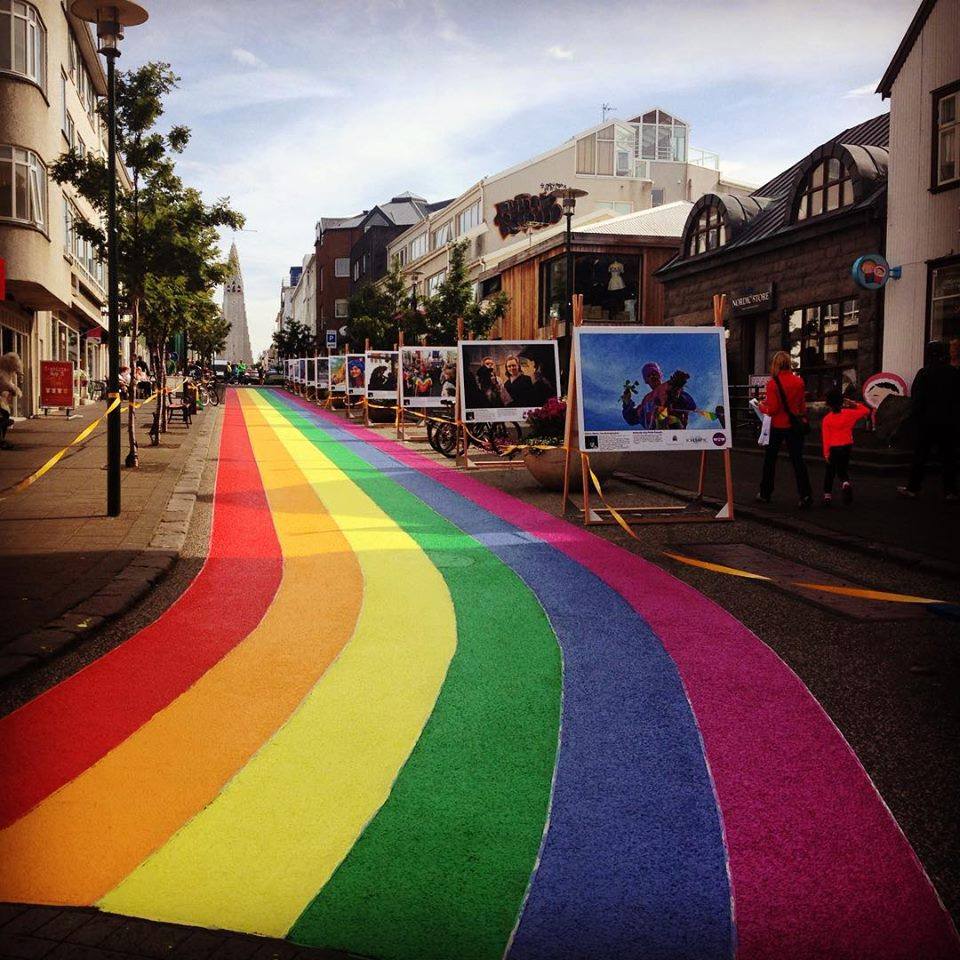
Photos (top and in the middle): Davíð Terrazas

